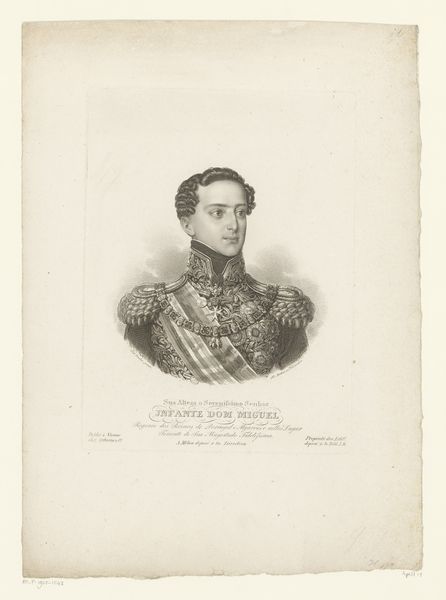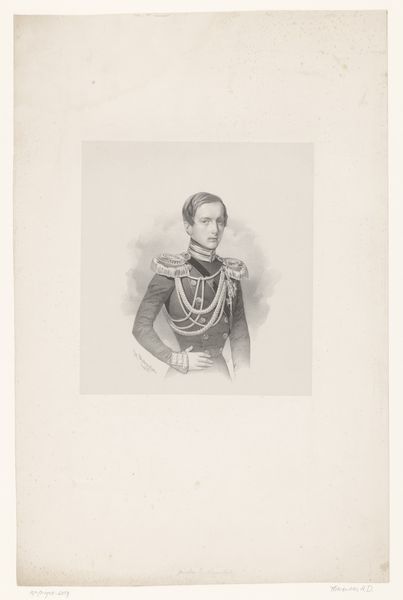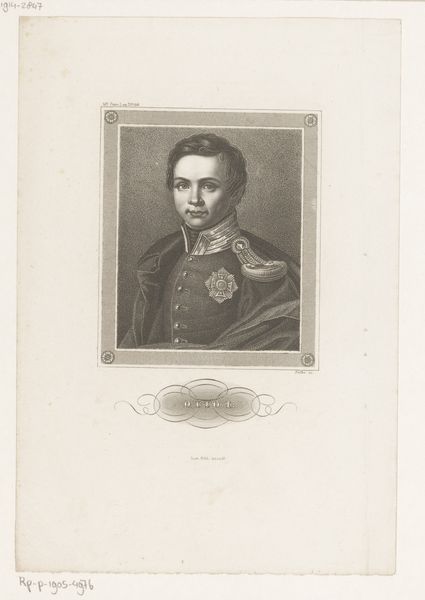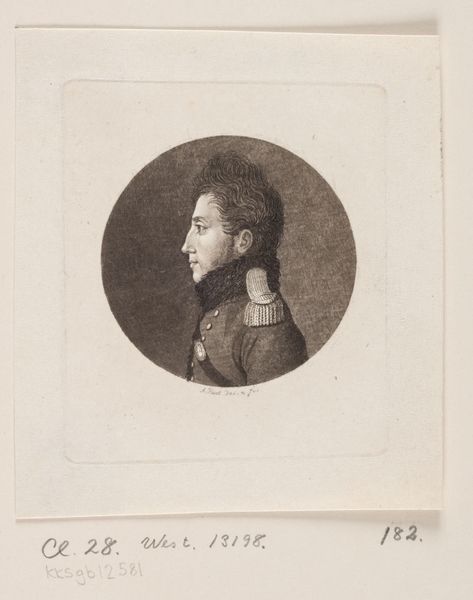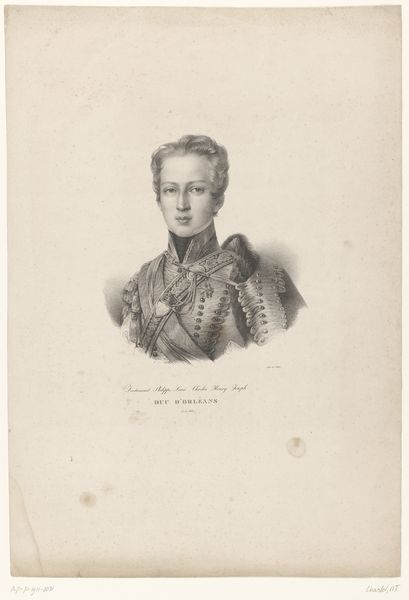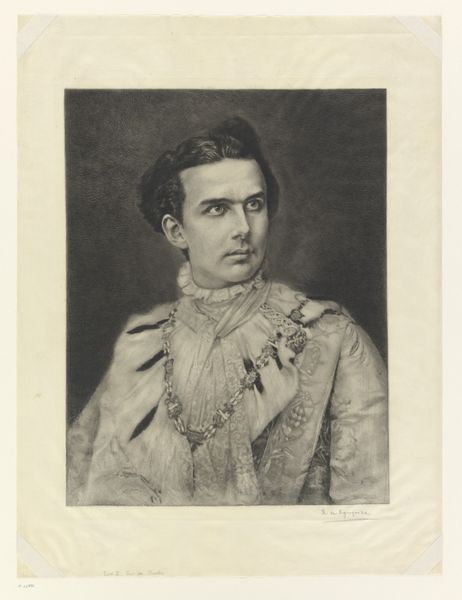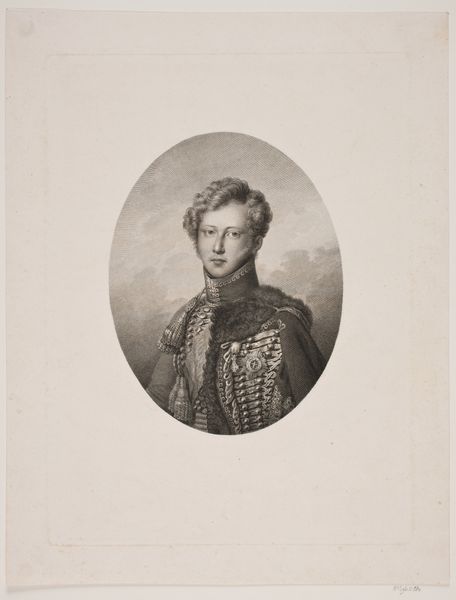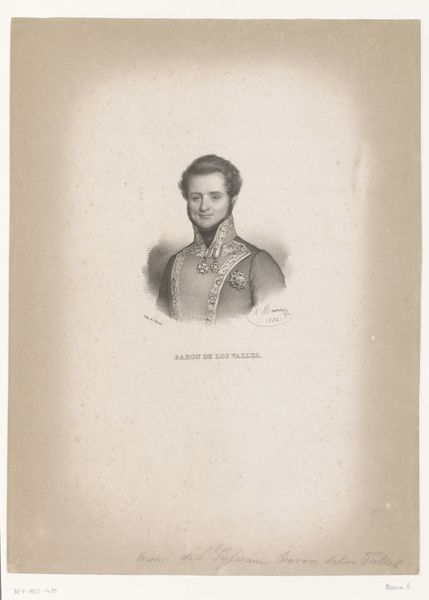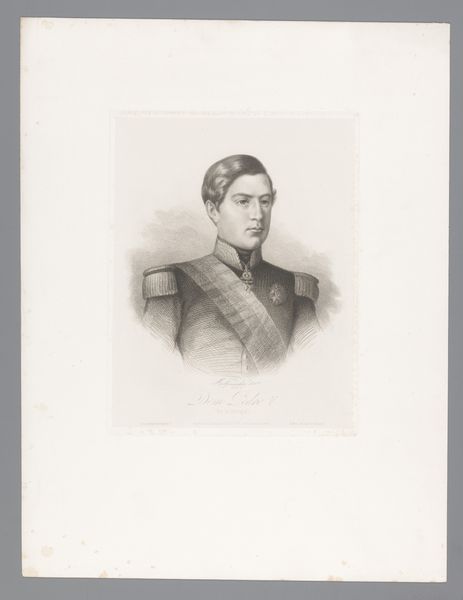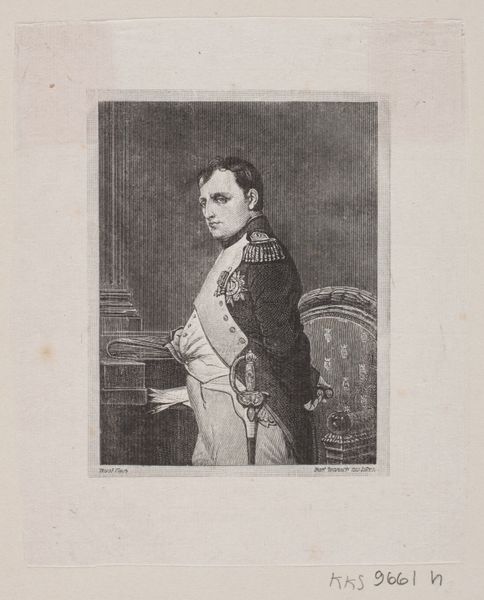
engraving
#
portrait
#
history-painting
#
engraving
#
realism
Dimensions: height 170 mm, width 108 mm
Copyright: Rijks Museum: Open Domain
Editor: So, this engraving, "Portret van Don Miguel, koning van Portugal," created sometime between 1778 and 1852 by Joseph Stöber, is incredibly detailed. I'm struck by how lifelike he seems despite the limitations of the medium. What catches your eye about this portrait? Curator: I'm immediately drawn to the compositional balance. The artist uses the formal framing of the portrait bust, centralized and symmetrical, to present Don Miguel in a highly controlled manner. The detailing in the engraving technique – observe the meticulous rendering of the uniform, the gradations of tone defining the face – lends a remarkable presence. Note how line and form create shape. Editor: It's interesting how the precise engraving can create such a vivid texture, especially on the uniform. But it almost feels… cold. Is that just me? Curator: I perceive it too. It could be considered a quality emerging directly from the visual order. Consider the relatively limited tonal range inherent to the medium, which serves to flatten the image. Then, how would you suggest we describe the composition with what is in view of Don Miguel? Editor: Well, it is limited, almost clinical in its sharpness. It makes sense he’s portrayed like that since he is the king. I did wonder, could it be that by not idealizing him, it’s more 'real,' capturing some sense of how the artist viewed him? Curator: That is certainly possible, but how else is it possible? However, any such interpretations should, for methodological purity, remain secondary to primary visual analysis. And on our primary observations and visual experience, we are able to further assess. Editor: That makes a lot of sense. Focusing on the composition and the technique allows us a solid, neutral foundation for everything else. I guess the precision is the point! Curator: Precisely! From there, one may begin to make other speculative cultural or historical inferences and readings of what is there. The most interesting is that of its shapes, lines, and forms.
Comments
No comments
Be the first to comment and join the conversation on the ultimate creative platform.
